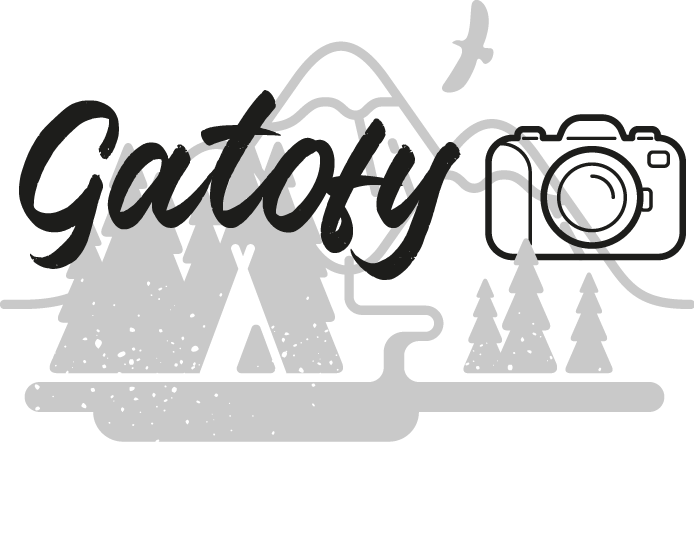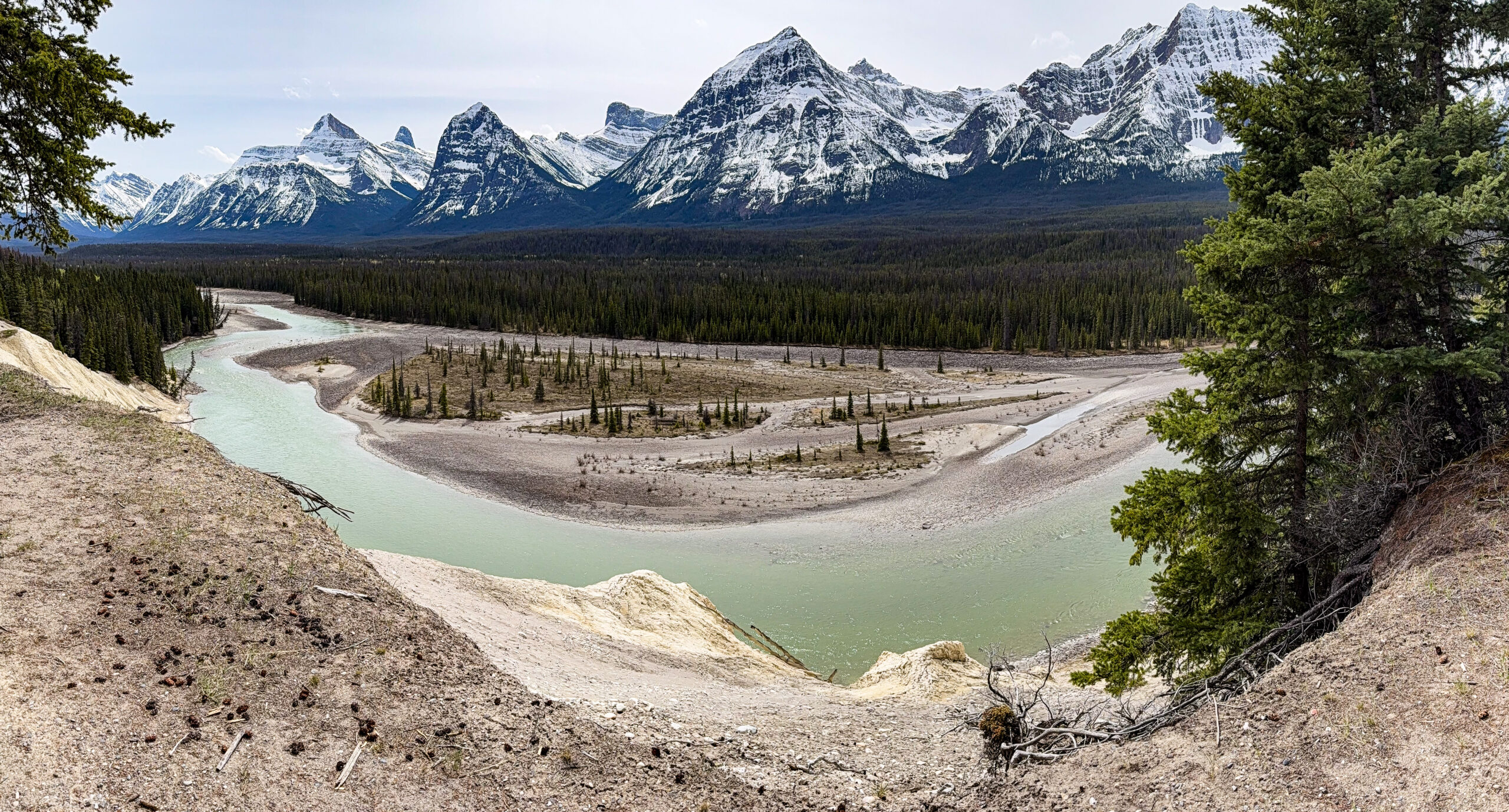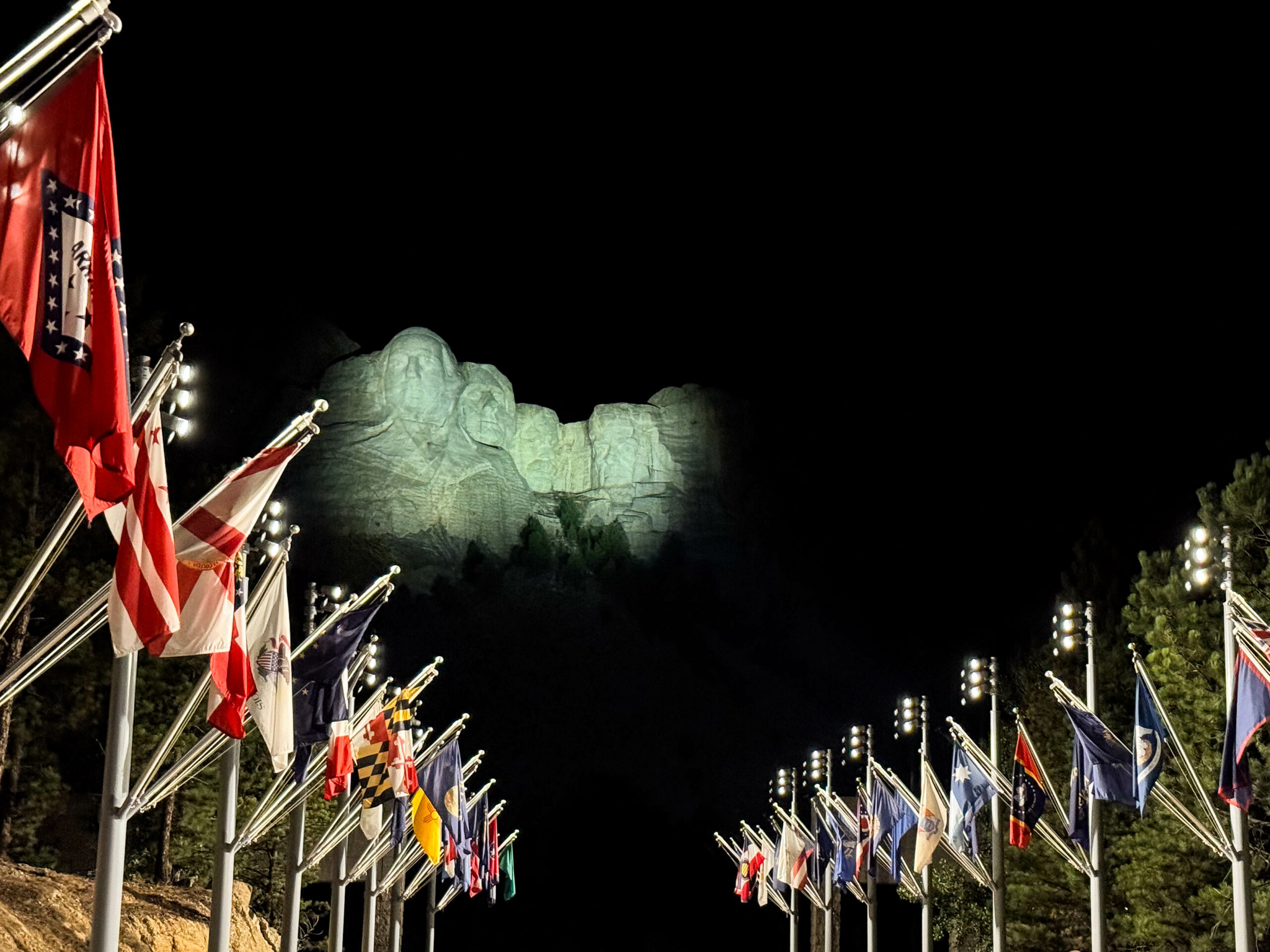🇩🇪 … übers Falkland Rodeo durchs Fraser Valley zum Pazifik nach Vancouver
Wir verlassen früh unseren Platz oberhalb Kelowna und machen uns auf nach Falkland. Die dortige Stampede [Rodeo] ist eine der ältesten Veranstaltungen dieser Art in Kanada, dieses Jahr findet sie zum 105. Mal statt. Marc & Genevieve haben uns einen Platz auf der Tribüne reserviert.
Bei einem Rodeo-Turnier gibt es verschiedene Disziplinen, die in Timed Events (Zeit-Disziplinen) und in Roughstock Events (Punkte-Disziplinen) unterteilt sind. Bei den Timed Events reiten die Wettkampfteilnehmer um die schnellste Zeit, während bei den Roughstock Events um die höchste Punktzahl geritten wird. Der Reiter muss sich acht Sekunden auf dem Tier halten, ohne das Tier, sich oder seine Ausrüstung mit seiner freien Hand zu berühren. In diesen acht Sekunden wird der Reitstil des Reiters und der Schwierigkeitsgrad des Tieres von zwei Judges (Preisrichtern) bewertet.
Timed Events: Barrel Race (Tonnenrennen), Pole Bending(Stangenrennen/Slalom), Rescue Race (Rettungsrennen) und Break Away Calf Roping (Kälberfangen).
Roughstock Events: Bareback Riding (Reiten von Wildpferden ohne Sattel), Saddle Bronc Riding (Reiten von Wildpferden mit Sattel) und Bull Riding (Bullenreiten).
Roping-Wettbewerbe basieren auf den Aufgaben eines arbeitenden Cowboys, der häufig Kälber und ausgewachsene Rinder für das Brandzeichen, die medizinische Behandlung und andere Zwecke einfangen musste. Der Cowboy muss ein Seil mit einer Schlaufe, das als Lasso, Riata oder Reata bezeichnet wird, über den Kopf eines Kalbes oder auf die Hörner und um die Hinterbeine eines ausgewachsenen Rindes werfen und das Tier auf eine Art und Weise sichern, die von seiner Größe und seinem Alter abhängt.
Calf Roping, in den Vereinigten Staaten und Kanada auch Tie-Down Roping genannt, basiert auf der Rancharbeit, bei der Kälber zum Brandmarken, zur medizinischen Behandlung oder zu anderen Zwecken angeseilt werden. Es ist die älteste der zeitlich begrenzten Disziplinen des Rodeos. Der Cowboy fesselt ein laufendes Kalb mit einem Lasso um den Hals, und sein Pferd hält an und setzt sich auf das Seil, während der Cowboy absteigt, zum Kalb läuft, es auf den Boden wirft und drei Füße zusammenbindet. (Wenn das Kalb beim Anbinden fällt, muss der Cowboy warten, bis das Kalb wieder auf die Beine kommt, damit der Cowboy die Arbeit erledigen kann). Die Aufgabe des Pferdes ist es, das Kalb am Seil zu halten. Ein gut trainiertes Abseilpferd wird sich langsam zurückziehen, während der Cowboy das Kalb anbindet, damit das Lasso nicht verrutscht.
Beim Bullenreiten reiten die Cowboys nicht auf Pferden, sondern auf ausgewachsenen, bockenden Stieren. Obwohl ähnliche Fähigkeiten und Ausrüstungen wie beim Bareback-Bronc-Reiten erforderlich sind, unterscheidet sich diese Disziplin aufgrund der Gefahren erheblich von Reitwettbewerben. Da Stiere unberechenbar sind und einen gestürzten Reiter angreifen können, arbeiten Rodeo-Clowns, die heute als „Bullfighter“ bekannt sind, während des Bullenreitens, um die Stiere abzulenken und Verletzungen der Teilnehmer zu vermeiden.
Leider spielt das Wetter nur begrenzt mit, immerhin regnet es weniger und ist wohl auch wärmer als die Tage zuvor. Marc und Genevieve haben schon alles organisiert, wir treffen Marc quasi beim Einparken. Schön von so erfahrenen Weltreisenden zu profitieren, vielen Dank nochmals. Kurz darauf sitzen wir auf der Tribüne und schauen fasziniert der Veranstaltung zu. Alles ist sehr professionell und gut organisiert. Wir sind schnell gefesselt von dem Wagemut der Männer und der professionellen Aufmerksamkeit der Helfer. Die Stiere sind sowas von unberechenbar und unglaublich schnell. Chapeau allen. Für uns sehr lustig, aber sehr Ernst für die Teilnehmer, war das Rodeo der Kinder auf Ziegen. Kurzum eine sehr gelungene Veranstaltung – unser erstes Rodeo oder Stampede, wie es hier so schön heißt.
Hinter Kamloops treffen wir auf Richie & Sarah aus Hamburg, die mit Hund in einem blauen Unimog seit 2 Jahren unterwegs und nun auf dem Weg zurück nach Hause sind. Bei Ihrem ersten echten Tee seit 2 Jahren tauschen wir uns über die Baja California aus. Wir bekommen wertvolle Tipps, lieben Dank nochmals dafür.
Wir folgen zunächst dem Thompson River Valley, wechseln dann via Hwy 97 und 99 ins landschaftlich sehr beeindruckende Tal des Fraser-Rivers (Hwy 12). Eine super schöne Strecke beginnend mit dem Marble Canyon PP und dem türkisblauen, klaren Wasser des Pavillon Lake gefolgt von der gewaltigen Schlucht des Fraser Canyon. Die Estate Winery Fort Bereens lockt zur Unzeit mit einer Weinprobe, so ansprechend die Räumlichkeiten sind die Rotweine leider nicht unsere Richtung, wir nehmen etwas vom leckeren Riesling(!) für die heißen Tage mit. Klar, dass die lokale Brewing Company der nächste Stopp wird, leider ohne Tasting vor Ort – Fort Bereens geschuldet – ergänzen wir unsere Vorräte auf Grund der lautmalerischen Beschreibungen. Generell empfinden wir das Bier im Westen bitterer und nicht ganz so fruchtig frisch wie das im Osten gebraute. Hier in Lilloet waren auch während des 2. WK Internierungslager der „kanadischen Japaner“.
Via Hwy 7 fahren wir am rechten Fraser-River-Ufer unseren Stellplatz in West-Vancouver an, direkt hinter der Lions Gate Bridge, gut und zentral gelegen, aber nicht günstig.
Nun sind wir tatsächlich quer durch Kanada gefahren (24.787 km seit Halifax, fast können wir es selbst nicht glauben.
Vancouver ist eine faszinierende Metropole, malerisch am Delta des Fraser River gelegen und von schneebedeckten Bergen umgeben. Eine tolle Skyline in Down-Town, weitläufige Parkanlagen, schöne Museen kontrastieren die auf den Straßen lebenden Alkohol- und Drogenabhängigen. Wir haben schöne Tage in der Stadt verbracht und waren mit öffentlichen Verkehrsmittel, Fahrrädern und viel zu Fuß unterwegs. Neben vielem Anderen hat uns das Museum of Anthropology auf dem Gelände der University of British Columbia – eines der führenden Museen für die Kultur der First Nations im pazifischen Nordwesten- gefallen, der Stanley Park und das Aquarium, die Geschäfte in Chinatown, die „steam clock“ in Gastown, eine mit Dampf betriebene öffentliche Uhr, die alle 15 Minuten pfeift und nicht zu vergessen die Schuhgallerie von John Fluevog.
Tacho: 46.581 km / 26.05.25 / 3.648km(2025)
🇬🇧 … Across the Falkland Rodeo through the Fraser Valley to the Pacific Ocean to Vancouver
We leave our campsite above Kelowna early and make our way to Falkland. The stampede [rodeo] there is one of the oldest events of its kind in Canada, this year it is taking place for the 105th time. Marc & Genevieve have reserved us a seat in the grandstand.
There are various disciplines at a rodeo tournament, which are divided into timed events and roughstock events (points disciplines). In the timed events, the competitors ride for the fastest time, while in the roughstock events they ride for the highest number of points. The rider must stay on the animal for eight seconds without touching the animal, himself or his equipment with his free hand. During these eight seconds, the rider’s riding style and the animal’s level of difficulty are assessed by two judges.
Time trials: Barrel racing, pole bending (pole racing/slalom), rescue racing and break away calf roping.
Roughstock competitions: Bareback Riding (riding wild horses without a saddle), Saddle Bronc Riding (riding wild horses with a saddle) and Bull Riding (bull riding).
Roping competitions are based on the tasks of a working cowboy, who often had to catch calves and adult cattle for branding, medical treatment and other purposes. The cowboy must throw a rope with a loop, called a lasso, riata or reata, over the head of a calf or onto the horns and around the hind legs of a full-grown steer and secure the animal in a manner that depends on its size and age.
Calf roping, also called tie-down roping in the United States and Canada, is based on ranch work in which calves are roped for branding, medical treatment or other purposes. It is the oldest of the temporary disciplines of rodeo. The cowboy ties a running calf with a lasso around its neck, and his horse stops and sits on the rope while the cowboy dismounts, walks to the calf, throws it on the ground and ties three feet together. (If the calf falls while being tied, the cowboy must wait for the calf to get back on its feet so the cowboy can finish the job). The horse’s job is to hold the calf on the rope. A well-trained roping horse will slowly pull back while the cowboy ties the calf so that the lasso does not slip.
Breakaway roping is a form of calf roping that uses a very short lasso that is lightly attached to the saddle horn with a string and a flag. When the calf is roped around the neck, the horse stops, the rope with the flag detaches from the saddle, and the calf continues to run without being thrown or tied. In most parts of the United States, this event is primarily for women of all ages and boys under the age of 12.
Team roping, also called heading and heeling, is the only rodeo event in which men and women compete together. Two people catch and hold a full-grown steer. One horse and rider, the „header“, let go of the running steer’s horns while the other horse and rider, the „heeler“, let go of the steer’s two hind legs. As soon as the animal is caught, the riders face each other and pull the bull lightly between them so that both ropes are taut. This technique has its origins in the methods of catching and holding for handling on a ranch.
Other timed competitions
Barrel racing is a competition in which speed and agility are measured over time. The horse and rider gallop around a cloverleaf pattern of barrels, having to turn skillfully without knocking the barrels over. In professional rodeo, barrel racing is a women-only sport.
Steer wrestling, also known as bulldogging, is a rodeo event in which the rider jumps from his horse onto a corriente bull and wrestles it to the ground by grabbing it by the horns. It is probably the most physically dangerous discipline in rodeo for the cowboy, who runs the risk of jumping head first off a running horse and missing the bull, or the thrown bull landing on him, sometimes horns first.
Contrary to popular myth, most modern „broncs“ are not actually wild horses, but rather pampered riding horses or horses bred specifically for bucking stock. Rough stock events also use at least two well-trained riding horses ridden by pickup riders (men or women) whose job it is to assist fallen riders and help successful riders get off the bucking animal safely.
Bronc Riding – there are two divisions in rodeo: Bareback Bronc Riding, where the rider is only allowed to hang on to the bucking horse with a type of saddle, and Saddle Bronc Riding, where the rider uses a special western saddle without a horn (for safety reasons) and hangs on to a heavy lead rope, called a bronc rein, which is attached to a halter on the horse.
In bull riding, the cowboys do not ride horses, but full-grown, bucking bulls. Although similar skills and equipment are required to bareback bronc riding, this discipline differs significantly from riding competitions due to the dangers involved. Because bulls are unpredictable and can charge a fallen rider, rodeo clowns, now known as „bullfighters,“ work during bull riding to distract the bulls and avoid injury to the contestants.
Unfortunately, the weather only plays along to a limited extent, but at least it is raining less and is probably warmer than the days before.
Marc and Genevieve have already organized everything, we practically meet Marc when he parks. It’s nice to benefit from such experienced world travelers, thank you again. Shortly afterwards, we sit in the stands and watch the event with fascination. Everything is very professional and well organized. We are quickly captivated by the daring of the men and the professional attention of the helpers. The bulls are so unpredictable and incredibly fast. Chapeau to all of them. The children’s rodeo on goats was great fun for us, but very serious for the participants. In short, a very successful event – our first rodeo or stampede, as they say here.
After Kamloops we meet Richie & Sarah from Hamburg, who have been traveling with their dog in a blue Unimog for 2 years and are now on their way back home. Over their first real tea in 2 years, we chat about the Baja California. We get some valuable tips, thanks again.
We first follow the Thompson River Valley, then change to the very scenic Fraser River Valley (Hwy 12) via Hwy 97 and 99. A super beautiful route starting with the Marble Canyon PP and the turquoise-blue, clear water of Pavillon Lake followed by the mighty gorge of the Fraser Canyon. The Estate Winery Fort Bereens tempts us with a wine tasting at an inopportune time, but as appealing as the premises are, the red wines are unfortunately not our cup of tea, we take some of the delicious Riesling(!) with us for the hot days. It goes without saying that the local Brewing Company is the next stop, unfortunately without tasting on site – due to Fort Bereens – we replenish our stocks based on the onomatopoeic descriptions. In general, we find the beer in the west more bitter and not quite as fruity and fresh as the beer brewed in the east. There were also internment camps for the „Canadian Japanese“ here in Lilloet during the Second World War.
We drive along Hwy 7 on the right bank of the Fraser River to our pitch in West Vancouver, directly behind the Lions Gate Bridge, well and centrally located, but not cheap.
Now we have actually driven across Canada (24,787 km since Halifax, we almost can’t believe it ourselves.
Vancouver is a fascinating metropolis, picturesquely situated on the delta of the Fraser River and surrounded by snow-capped mountains. A great skyline in Down-Town, extensive parks and beautiful museums contrast with the alcohol and drug addicts living on the streets. We spent some lovely days in the city, using public transport, bicycles and a lot of walking. Among many other things, we enjoyed the Museum of Anthropology on the grounds of the University of British Columbia – one of the leading museums for First Nations culture in the Pacific Northwest – Stanley Park and the aquarium, the stores in China

Alaska III – USA-Loop 2
🇩🇪 entlang des Cook Inlet fahren wir zu unserem südlichsten Punkt in Alaska: Homer-Spit. Wieder ein Ort, der sich ganz dem saisonalen Fischfang verschrieben hat.

Alaska II – USA-Loop 2
Alaska II. – USA-Loop 2 🇩🇪 der Glenn-Hwy zeigt viele Gletscher und ist landschaftlich sehr schön. Wir brauchen „ewig“ bis Palmer wegen unserer vielen Fotostopps.

Alaska I. – USA-Loop 2
Alaska I. – USA-Loop 2 🇩🇪 Bedeckt und regnerisch, kleine Bäume (Spruce/Fichten) wie Flaschenhalsbürsten soweit das Auge reicht. Die Straße quälend, schadhaft, sehr wellig und
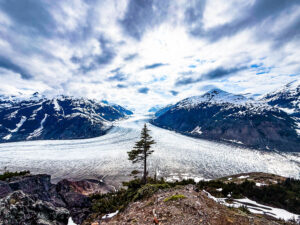
Nördliches BC & Yukon
🇩🇪 Wir haben von Port Hardy via Bella Bela nach Prince Rupert die Fähre genommen – ein Teil der Inside-Passage. Eine sehr beeindruckende Fahrt (19

Vancouver Island
🇩🇪 … durften wir 3 Wochen genießen und es war viel zu kurz. Wir sind von West-Vancouver nach Nanaimo übergesetzt und Richtung Port Alberni aufgebrochen.
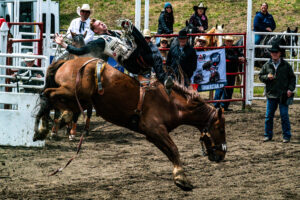
… yippee yeah …
🇩🇪 … übers Falkland Rodeo durchs Fraser Valley zum Pazifik nach Vancouver Wir verlassen früh unseren Platz oberhalb Kelowna und machen uns auf nach Falkland.
